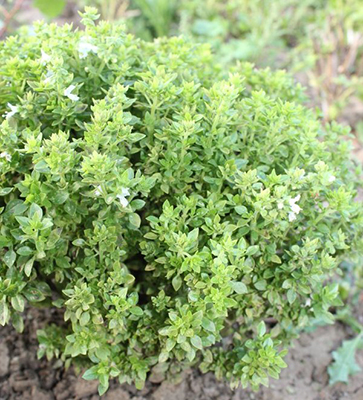Ocimum basilicum L. (Lamiaceae)




| ENG | basil |
| SK | bazalka pravá |
| CZ | bazalka pravá |
| PL | bazylia pospolita |
| HU | bazsalikom |
Using
A number of basils have commercial potential for a food production.
Basil is a source of essential oils (0.3 – 1.5 %), a culinary herb, and an attractive, fragrant, ornamental plant. The seeds contain edible oils. Extracts of the plant are used in traditional medicines, and have been shown to contain biologically active constituents that are insecticidal, nematicidal, fungistatic, or antimicrobial.
| I. | II. | III. | IV. | V. | VI. | VII. | VIII. | IX. | X. | XI. | XII. | |||||||||||||
| Sowing | ||||||||||||||||||||||||
| Planting | ||||||||||||||||||||||||
| Harvest | ||||||||||||||||||||||||
Botanical description and occurrence:
Basil genus comprises more than 30 species of herbs and shrubs from the tropical and subtropical regions of Asia, Africa, and Central and South America, but the main centre of diversity appears to be Africa.
Most commercial basil cultivars available on the market belong to the species O. basilicum.
Ocimum basilicum cultivars can be categorised into seven types: (1) tall slender types, which include the sweet basil group; (2) large-leafed, robust types, including ‘Lettuce Leaf’ also called ‘Italian’ basil; (3) dwarf types, which are short and small leafed, such as ‘Bush’ and ´Mánes´ basil; (4) compact types, O. basilicum var. thyrsiflora, commonly called ‘Thai’ basil; (5) purpurascens, the purple-coloured basil types with traditional sweet basil flavour; (6) purple types such as ‘Dark Opal’ and (7) O. citriodorum types, which includes lemon-flavored basils.
Basil plants contain a combination of linalool and methylchavicol and/or 1,8-cineole which reflects the traditional sweet basil aroma. Citral was the predominant compound in all the lemon-scented basils.
‘Mánes’ basil is a green lobed, compact and ornamental cultivar.
Why to have the plant in your garden:
In the sensory evaluation, the Variety 'Mánes' is the best variety out of the Czech company SEMO a.s. offer.
Fresh basil contains minerals Ca, Fe, Mg, flavonoids, vitamins C and A, etc.
Content of essential oil in the variety ´Mánes´, cultivated on the field, is in the range 0.36-0.38 ml/kg in dry weight. The variety ´Mánes´ cultivated in greenhouse contains 6.9-13.31 ml/kg essential oils in dry weight. The main compounds are eugenol, methyleugenol and ß-sesquiphellandrene.
Text:
Dr. Jarmila Neugebauerová, Mendel University in Brno, Czech Republic
Photo:
Dr. Jarmila Neugebauerová, Mendel University in Brno, Czech Republic, Dr. Ivana Mezeyová, SUA, Nitra, Slovak Republic

